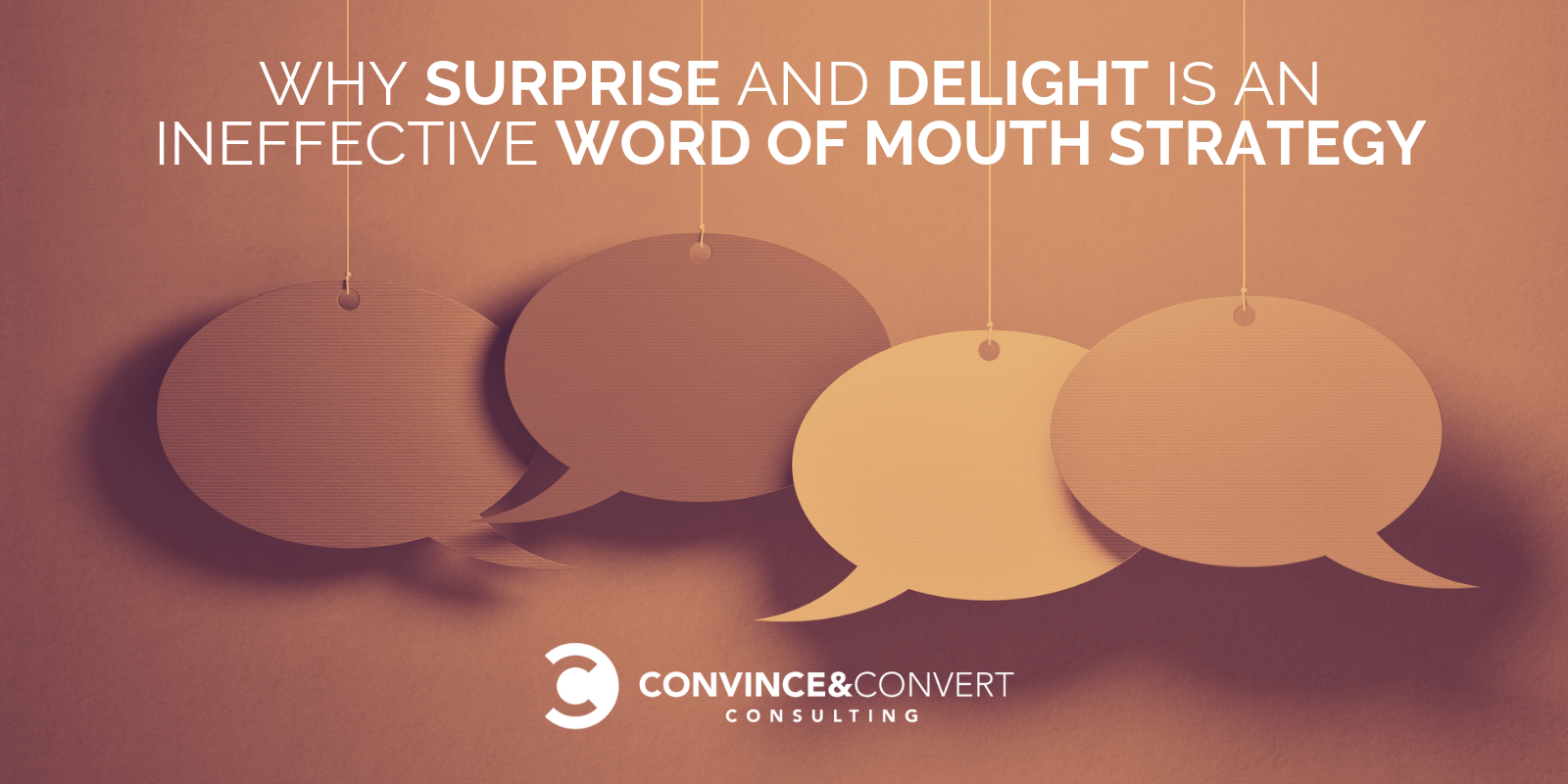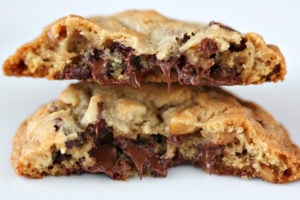
There’s a trend in marketing, fueled by social media, of businesses trying to garner publicity by doing something special for a customer. Known as “surprise and delight” in the social media community, these initiatives typically involve finding a customer via Twitter or Facebook and then aligning operations to create a “magic moment” for that one customer in that single instance.
For example, the author and entrepreneur Peter Shankman tweeted that he wished he had a steak, and Morton’s Steak House brought him one, at the airport.
These heartwarming tales can create momentary spikes in brand chatter, especially on social media, where the sharing of poignancy (even if you are personally unconnected to the story) is seemingly a condition of use. They are also near-mandatory inclusions in every book, speech, one-act play, poem, and puppet show that is even tangentially related to customer experience, as models of how to treat your customers. Except this one. Why? For a simple reason: Any differentiator that happens circumstantially is a publicity stunt, not a word‑of‑mouth strategy.
That doesn’t make it wrong, per se, but it’s certainly not strategic.
Surprise and delight is a lottery ticket, not a word of mouth strategy. It’s a stunt, and stunts aren’t the same as a repeatable, reliable plan.
Surprise and delight is a lottery ticket, not a word of mouth strategy.
Click To Tweet
For every Joshie the Giraffe that gets spread around the internet like a re-gifted fruit cake, how many other surprise and delight efforts don’t break through at all? A lot.
And even for those that do “go viral,” the lasting brand impact of these efforts is minimal. Although it may spawn some temporary goodwill for the brand, it quickly runs out of steam. While the story is cute, it’s not personally relatable: It didn’t happen to us, and we know it will not happen to us when we go to a Ritz-Carlton.
The problem with surprise and delight is that it’s a surprise. It happens one time, to one person, in one scenario. That’s not an operational choice that creates conversation day after day after day. Instead, it’s one or more team members doing something special because they felt like it. A stuffed giraffe is a random act of kindness.
A better approach—and a more strategic one—is to create a Talk Trigger for your business. A Talk Trigger is a strategic, operational choice that compels word of mouth. It’s an intentionally delivered differentiator that causes customer conversation every single day.
 Consider DoubleTree Hotels by Hilton. They give a warm, chocolate chip cookie at check-in to each hotel guest for 30 years. At present, they bake and give away 75,000 cookies every day. Does this cookie ritual create word of mouth? Does it turn their customers into volunteer marketers? Does it build their brand? YES.
Consider DoubleTree Hotels by Hilton. They give a warm, chocolate chip cookie at check-in to each hotel guest for 30 years. At present, they bake and give away 75,000 cookies every day. Does this cookie ritual create word of mouth? Does it turn their customers into volunteer marketers? Does it build their brand? YES.
In fact, we recently talked to 1,000 DoubleTree customers and found that 34% of them have—without being prompted—mentioned the cookie to someone else in the previous 60 days. That means that 25,000+ customers EVERY DAY talk about the cookie at DoubleTree. That’s just one of the reasons you don’t see many DoubleTree ads: the cookie and the conversations it spawns ARE the marketing strategy.
A Talk Trigger is not a stunt, it’s a conversation strategy. It’s doing word of mouth on purpose, instead of randomly. And all Talk Triggers should be offered to every customer, every time.

The impact of a universally offered differentiator is far greater in total that a one-off surprise and delight “magic moment,” because it is achievable by us all. We can personally experience it. It is a story in which we (or someone we know) are a major character.
As Jake Sorofman, formerly a vice president at Gartner, says: “[I]n the game of customer experience . . . consistency will always trump delight.”
We believe that not only does consistency trump delight but inconsistency generates contempt among your customers (or at least has the potential for doing so). Nowhere is this more acute than in the airline boarding process. Airlines in the United States continue to add new “zones” such that loading passengers on an aircraft features laughably numerous striations. Presumably done to give frequent fliers succor and solace, having so many boarding groups (American Airlines currently has nine for every flight) cannot possibly be a great experience for fliers boarding toward the end, followed only by baby strollers, bags of ice, and assorted flotsam and jetsam.
Is the boarding process a talk trigger? Absolutely, if you’re in group nine, and it’s not a happy story being told. Robbin Phillips and her coauthors described the importance of consistency in The Passion Conversation when they wrote: “The goal of any business should be to make word of mouth marketing operationally invisible. That is, it should be how a business does business not just one day, but every day.”
To be a talk trigger, and to work for your business every day and not just one day, a differentiator has to be repeatable. It’s not for randomly selected customers. Or your best customers. It’s for all customers.
 (An excerpt from my new book, written with Daniel Lemin. It’s called Talk Triggers: The Complete Guide to Creating Customers with Word of Mouth. Super special pre-order deals available right now (for a few days) including free books AND free chocolate chip cookies. Go to TalkTriggers.com to see the special packages I made for you).
(An excerpt from my new book, written with Daniel Lemin. It’s called Talk Triggers: The Complete Guide to Creating Customers with Word of Mouth. Super special pre-order deals available right now (for a few days) including free books AND free chocolate chip cookies. Go to TalkTriggers.com to see the special packages I made for you).
The post Why Surprise and Delight is an Ineffective Word of Mouth Strategy appeared first on Convince and Convert: Social Media Consulting and Content Marketing Consulting.
from Convince and Convert: Social Media Consulting and Content Marketing Consulting https://ift.tt/2MMyC9T



No comments:
Post a Comment